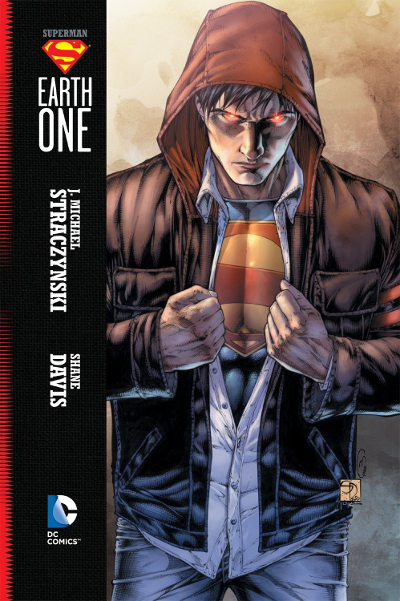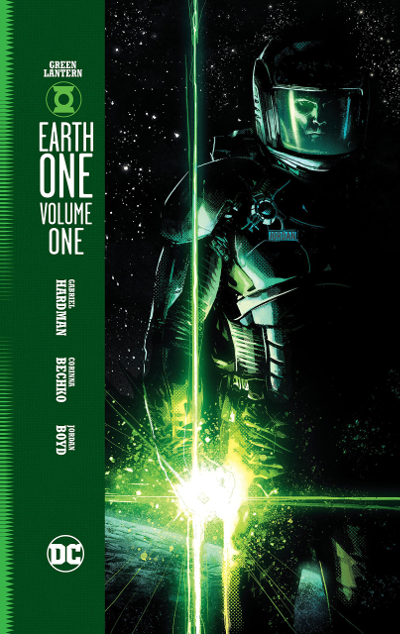The most commonly discussed difference between Marvel and DC superhero comics is that DC presents a more optimistic and fantastical universe, while the Marvel reality is grittier and relatively more grounded. In my opinion, Marvel comics have the more compelling shared continuity, which they’ve cultivated very carefully since Stan Lee, Steve Ditko and Jack Kirby laid the first foundations back in the early ’60s. By comparison the DC shared continuity is much more haphazard; bursting at the seams to try and contain the thousands of bizarre concepts and styles that run in tangents to one another, and has required numerous ‘resets’ over the decades to try and streamline the inherent inconsistencies. Having said that, DC are quite happy to publish a whole number of superhero comics featuring their classic characters outside of any regular continuity, and the result is a back catalogue of fantastic reading. Batman Year One, The Dark Knight Returns, Gotham By Gaslight, DC New Frontier, Superman Red Son, All-Star Superman, and most recently Batman White Knight have all resulted from this ethos.

In 2010, DC began an initiative to extend their reach into this mainstream literary market by launching the Earth One line of graphic novels. Despite the name, this is a range of stories that do not enhabit a shared reality, but are intended to serve as standalone and accessible starting points for each of their most iconic properties. The tone would be more grounded and cinematic, and slightly more adult themes would be explored, in an attempt to appeal beyond the traditional comic market. Finally the graphic novels would be presented as hardcovers in a slick and stylish trade dress; taking a lead from the European Bande Desinee style, and looking very presentable on a bookshelf.

First up was Superman Earth One, written by veteran comics/ tv/ movie writer JM Straczynski. 3 volumes were published between 2010 and 2014, telling a coming-of-age story of sorts for the Man of Steel. Volume 1 is fairly sombre, with young adult Clark Kent struggling to find his place in a world he knows is not his own. The story is a bit dry to start with, and even though artist Shane Davis provides some beautifully drafted linework, you might struggle to invest yourself in the conflict with the vicious alien invaders that are hunting Clark down. Volumes 2 and 3 see a bit of a change of tone, with Straczynski introducing more humour and some relatable soap operatics to the mix. In fact, with it’s focus on a young white urbanite male trying to juggle big city living with a super-heroic double-identity, volume 2 in particular reads more like a Spider-Man comic (which Straczynski has also written for an extended run). Many of the writer’s flaws are on display throughout, with some clunky dialogue, contrived set-pieces and the awkward inclusion of more adult themes (e.g. subplots on international intervention against despots, and on neighbourhood sex workers) jarring against the escapism of the Superman mythos. But each volume wears it’s heart on it’s sleeve, and if you can look past the slightly juvenile storytelling, the mix of blockbuster action and small-scale character drama may well win you over.

Far less beholden to the original mythos are the first two volumes of Green Lantern Earth One, released in 2018 and 2020 respectively. Much of the cheesier aspects of Hal Jordan’s storyline have been jettisoned out the air-lock; including the emotion-driven power source of the rings, the rainbow spectrum of the various Corps, and the silly domino mask that the hero wears to supposedly conceal his identity. What’s left is a gritty space-thriller, taking place across the span of the entire cosmos. Co-Writer/Artist Gabriel Hardman has a background in storyboarding movies (including Christopher Nolan’s Dark Knight, Inception and Interstellar), so his designs are practical while his framing is cinematic. These volumes have high ambitions, juggling a large cast across several subplots in multiple intergalactic locations. Certain scenes can get a bit wordy, and the characterisation is quite thin; but this is largely due to the sheer amount of storyline that’s packed in. If you like the idea of Flash Gordon filmed through the stark aesthetic of Ridley Scott, then you’ll find a lot to like here.

Batman’s early years as the Dark Knight of Gotham City have already been well covered in some fan favourite interpretations; from Frank Miller’s noirish Year One (both comic book and animated) through Christopher Nolan’s seminal Batman Begins movie, to 5 seasons of the Gotham tv show. The creative team of the Batman Earth One graphic novels manage to find an original spin on Bruce Wayne’s arc by presenting it in the style of an 80’s action movie; with despicable villains, white knuckle thrills and plenty of satisfying payoffs. Writer Geoff Johns and artist Gary Frank are behind some of my absolute favourite comics (including Shazam and Doomsday Clock), so when I say that this is possibly my favourite comic of theirs, I mean it as the highest praise. While Volume 1 from 2012 serves as a very readable revenge thriller, the team upped the ante in 2015 for Volume 2, with more action, more twists, and a compelling mystery that Batman has to use all of his fledgeling detective skills to solve. At time of writing, I believe that the writing and artwork of Volume 3 have now been completed, and Johns has plans for Volume’s 4 and 5 still to come. These books in particular are accessible, entertaining, and leave the audience clamouring for more, which I think is the mission statement for the entire Earth One line, so I hope they find the wider audience that they deserve.

